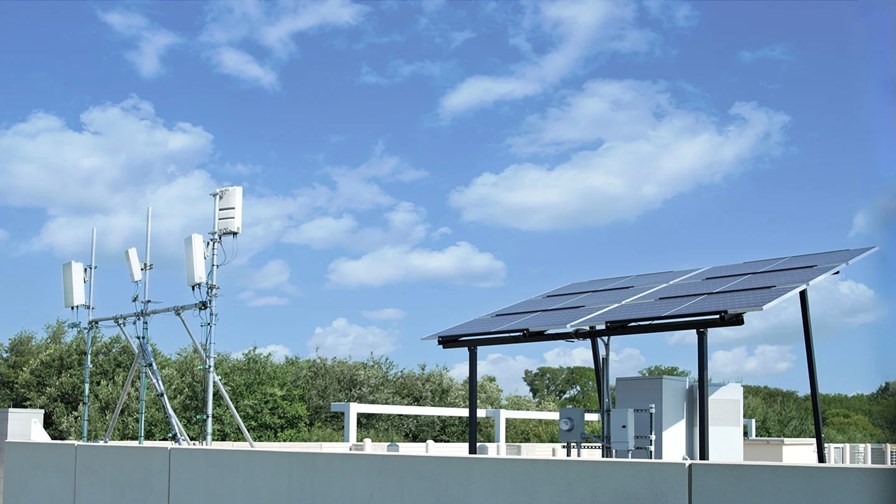
Ericsson’s solar-powered 5G site in Texas, US
- Achieving greater energy efficiency is a critical goal for network operators
- Ericsson claims to have made a significant breakthrough in the management of radio access network energy consumption
- It’s new solar-powered 5G site in the US, the vendor claims, can reduce annual energy use by around 65%
Ericsson has unveiled a proof of concept (PoC) energy-smart 5G site in the US that makes use of artificial intelligence (AI), machine learning (ML) and solar power to consume up to 65% less energy consumption each year than a traditional site that uses electricity from the grid.
Its network solution, which has been demonstrated at a 5G site in Plano, Texas, according to Ericsson, represents the latest development in hybrid energy management by integrating “energy-efficient solutions with [the] use of renewable energy sources”. The site can be fully operated using solar energy, supported by lithium-ion batteries, for up to 24 hours.
Ericsson described the use of renewable sources as “the most impactful decarbonisation strategy” for mobile networks, adding that the site addresses the challenge of using renewables in an “intelligent and cost-effective way”.
The 5G site has also incorporated AI and ML capabilities across the end-to-end radio access network (RAN) components, an Ericsson spokesperson told TelecomTV. AI and ML algorithms are employed to optimise energy-saving features by enabling sleep modes on the radio with dynamic traffic fluctuations. Another application developed by the vendor enables “the intelligent orchestration” of the multiple energy sources available on site.
The vendor has also used “advanced” energy management features to facilitate load shifting (using solar power or batteries during high electricity tariff times), peak shaving (when a consumer reduces power consumption quickly and for a short period of time to avoid a spike in consumption) and demand-response functionalities – which, according to the company, improve the overall energy efficiency and operational performance.
The integrated system also allows operators to identify energy utilisation statistics and patterns, so they can optimise certain areas and further improve their energy efficiency.
In terms of energy savings, Ericsson told TelecomTV that the private network site in Texas is capable of reducing the power required from the electricity grid by up to 65% per year.
At an off-grid site, the use of integrated lithium-ion batteries with Ericsson’s software can result in “a notable reduction” of between 40% and 50% in the fuel (such as diesel) consumed by power generators. For on-grid sides, savings would mainly occur during grid outages, the company explained.
The site will also help to reduce network operator costs: According to Ericsson, telcos could save money by using the batteries or solar energy when electricity prices are high and then recharge the batteries when rates are lower.
The vendor was unable to specify how much operators would be able to save with its proof-of-concept 5G site, as it depends on factors such as the utility tariff plan, variations in demand fluctuations during excess energy peaks and how much sunlight there is.
The vendor is also exploring the potential use of other green-energy sources, such as hydrogen-based generators, as alternatives to diesel. This concept is not new, as Israeli fuel cell company GenCell has been developing a system that uses hydrogen derived from liquid ammonia to power sites in off-grid locations – see GenCell taps ammonia to slash telco remote site energy costs.
Achieving greener telco networks was a central focus point at this year’s DSP Leaders World Forum and you can watch a panel discussion on the next steps to creating low-power energy-efficient networks here.
- Yanitsa Boyadzhieva, Deputy Editor, TelecomTV




